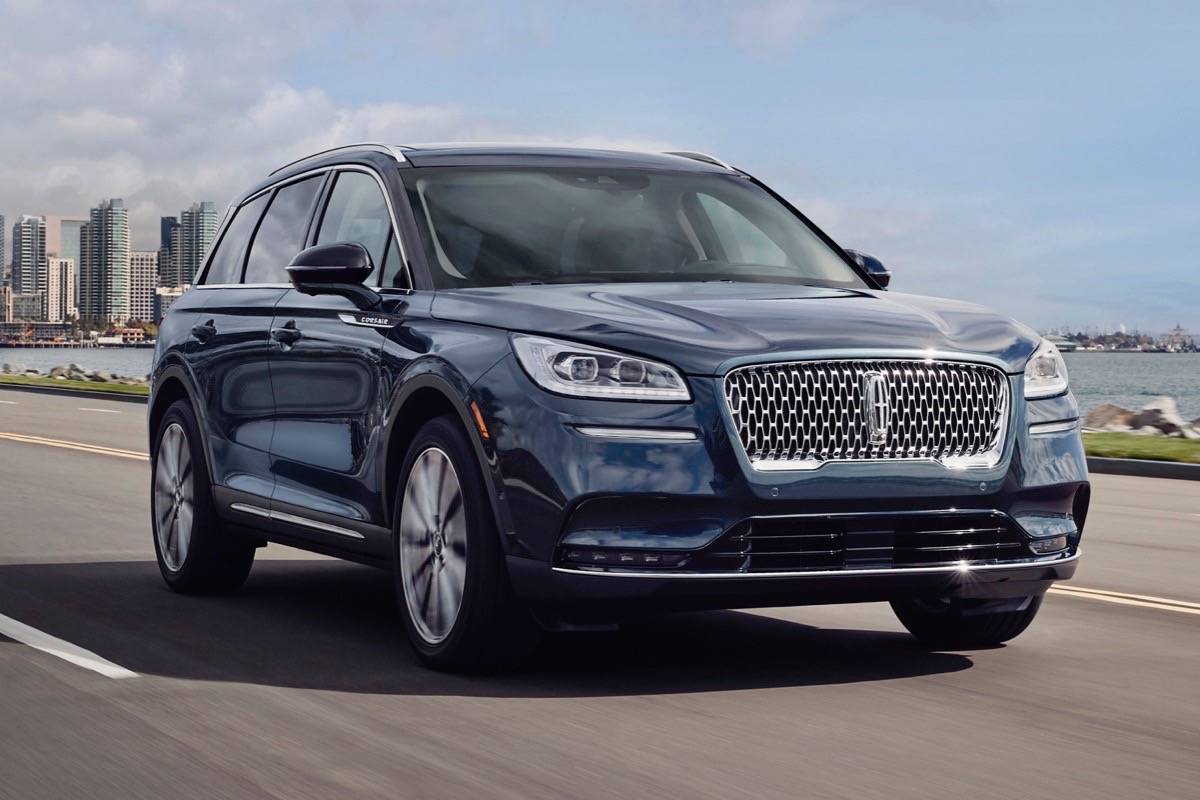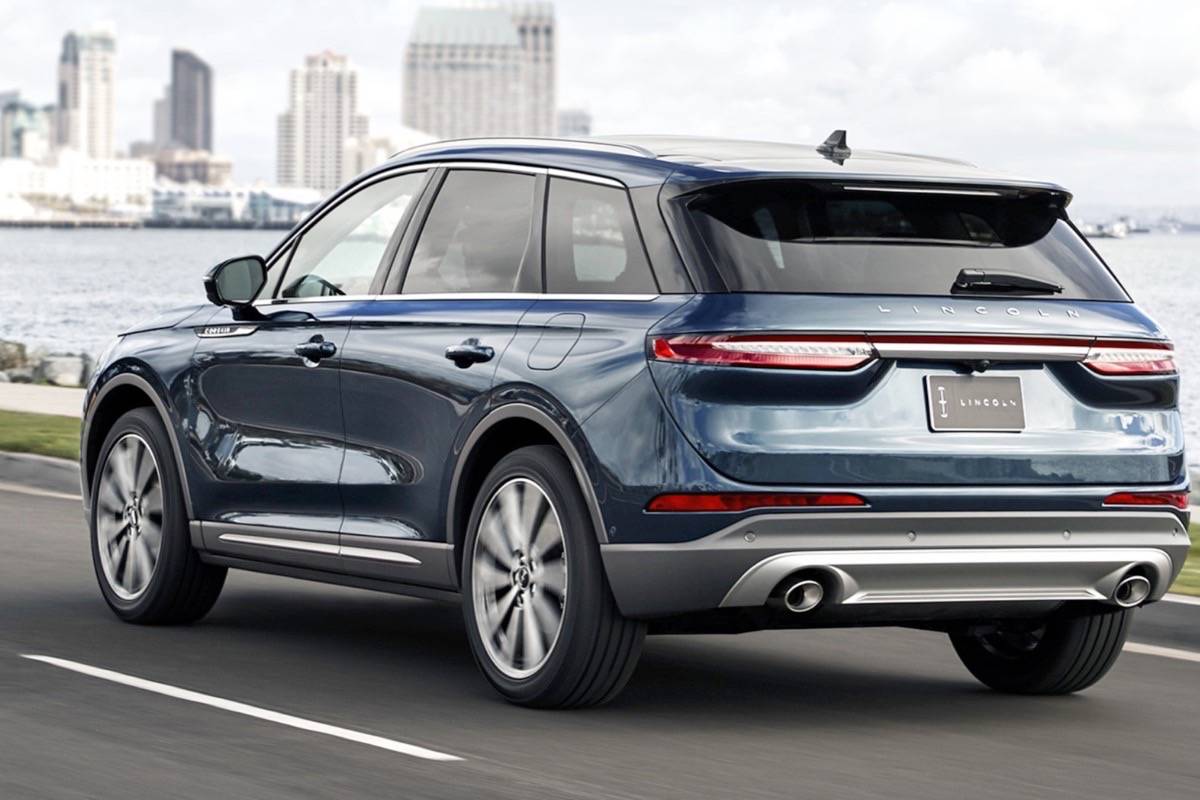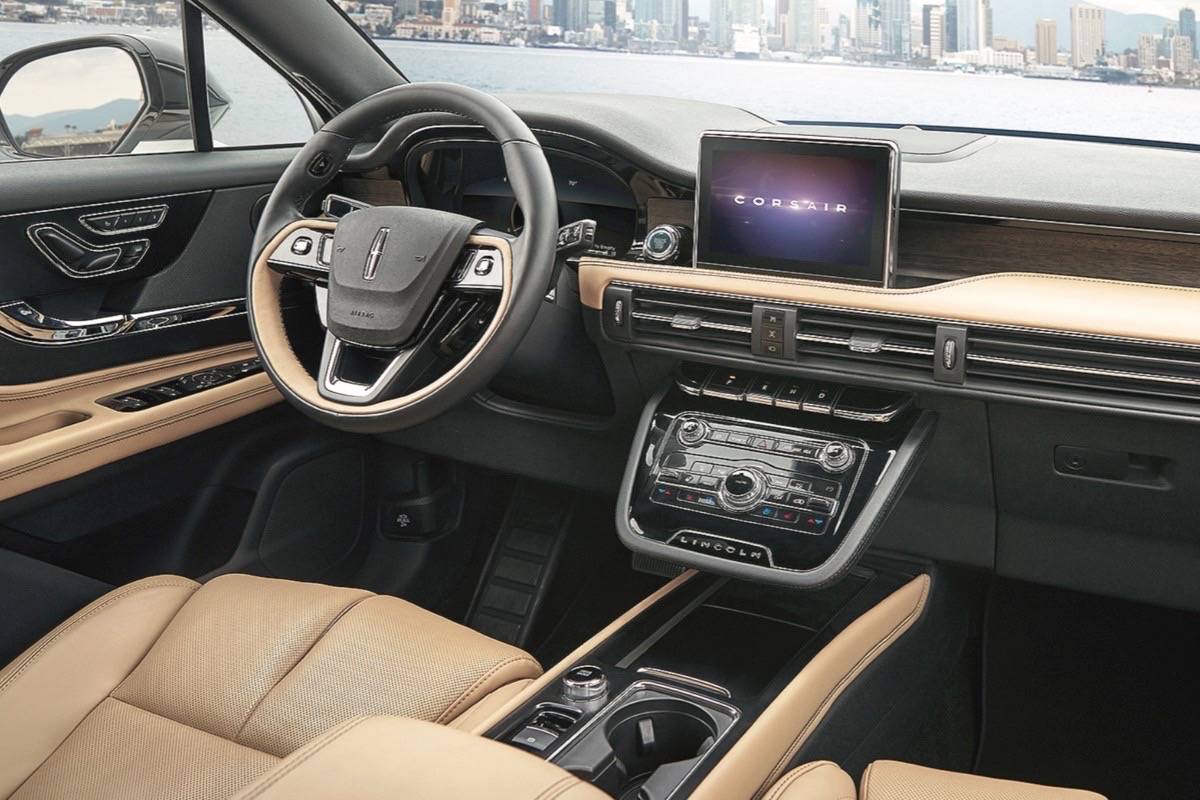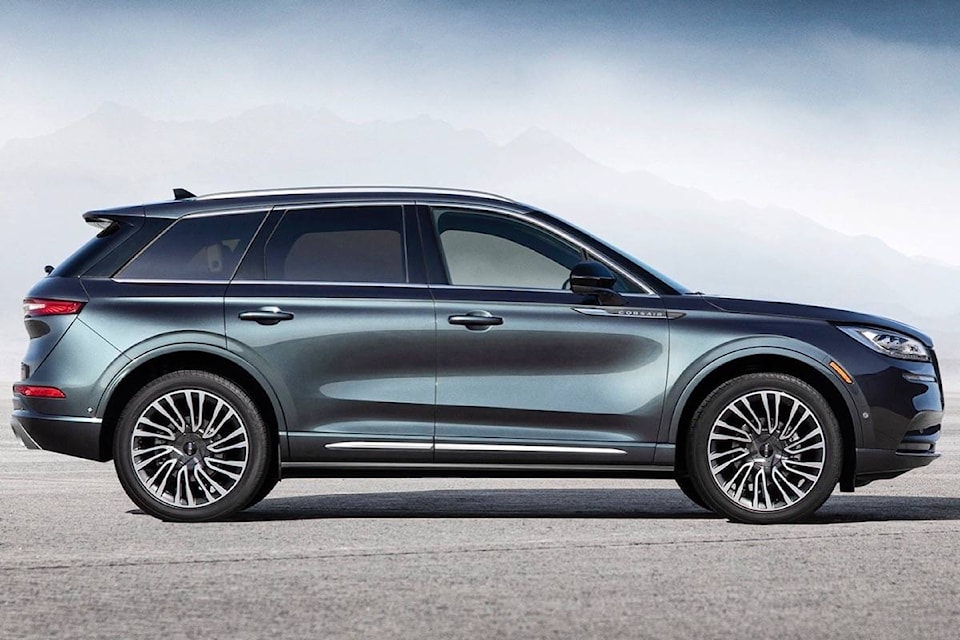You can’t accuse Ford’s premium division of being asleep at the wheel in terms of product development.
Lincoln ditched the three-letter vehicle name of the MKC as part of a comprehensive redesign (now called the Nautilus), the new 2020 Aviator was added to the line — bridging the gap between the Nautilus and the redesigned Navigator — and now the MKC has been replaced with the Corsair for 2020. We say replaced because it’s essentially a new vehicle, save for the engines.
The five-passenger Corsair arrives with a noticeable sheetmetal refit, including a larger grille, crisper fender and door panel-creases and a cleaner-looking liftgate. The Corsair exudes a richer, classier appearance that should strike the right chord with upscale tall-wagon buyers.
Compared to the MKC, the Corsair is about 3.5 centimetres longer, 15 centimetres wider and has about 2.5 centimetres more distance between the front and rear wheels. The result is more stowage capacity behind the back seat and behind the front seats when the second row is folded flat.
The back seat can be adjusted fore and aft by up to 15 centimetres, depending on whether cargo or passenger space is the priority.
The Corsair’s cleaner, simplified dashboard is a far cry from the MKC’s busy flight-deck layout. The Corsair is distinguished by a wide ribbon of vents, a 20-centimetre tablet-style touchscreen tastefully propped up beside the gauges, and a control panel that protrudes just above the floor console. The transmission switches remain, but now extend horizontally below the air vents. In the MKC, they were positioned vertically beside the touch screen, a location that seems more intuitive.
An unusual step, and one intended to make the Corsair a little classier: The alerts (unbuckled seatbelt, door ajar, etc.) are musical sound bites created by the Detroit Symphony Orchestra. The pleasing notes replace the typical warning chimes.
Of the few carryovers from the MKC are the available powerplants. The base Corsair Standard is equipped with a turbocharged 2.0-litre four-cylinder that puts out 250 horsepower and 275 pound-feet of torque. The optional Reserve trim is fitted with a turbocharged 2.3-litre turbo four-cylinder with a rating of 280 horsepower and 310 pound-feet.
Each engine, which can now be started remotely via your smart phone, is connected to an eight-speed automatic transmission. The MKC had a six-speed.
Fuel-economy numbers for the base 2.0 turbo are 11.1 l/100 km in the city, 8.1 on the highway and 9.8 combined. That compares with 12.3/9.3/11.0 for the 2019 MKC. The Corsair’s more efficient transmission gets much of the credit for the improvement.
All-wheel-drive is standard, no matter the engine. The on-demand system turns the front tires under optimum traction conditions, but directs torque to the rear tires during hard acceleration or when front slip occurs, such as on wet or icy surfaces.
There are five operating modes: Normal; Excite (sporty); Slippery; Deep Conditions (mud and sand), and Conserve (economy).
Base pricing starts at $46,800, including destination charges. That gets you 10-way power-operated and heated front seats, power liftgate and a full suite of dynamic-safety technologies — such as emergency braking and blind-spot warning — that are part of the Lincoln Co-Pilot 360 package.
The top-level Reserve adds voice-activated navigation, leather-upholstered seats, power-folding second-row bench, panoramic sunroof and 19-inch wheels (18s are standard).
Options include the 2.3-litre engine and active-safety technology, such as speed-sign recognition, traffic-lane centreing and reverse-braking assist. A head-up windshield-projection display and 20-inch wheels are also optional.
The Corsair is not a rebadged MKC. It represents a significant move forward in styling, content and spaciousness. In other words, those checklist items that matter the most to luxury-vehicle buyers.
What you should know: 2020 Lincoln Corsair
Type: Four-door, all-wheel-drive compact utility vehicle
Engines (h.p.): 2.0-litre DOHC I-4, turbocharged (250)
2.3-litre DOHC I-4, turbocharged (280)
Transmission: Eight-speed automatic
Market position; Lincoln’s makeover program for most of its vehicles includes replacing three-letter badges with proper names. Styling and content advancements are also part of the brand’s more aggressive approach to moving metal.
Points: New sheetmetal is more attractive and mimics the larger Lincoln models. • Interior appointments are high-tech and more stylish. • Base and available turbo I-4 engines carry over, however a plug-in hybrid powertrain is expected to arrive for the 2021 model year. • The use of symphonic chimes instead of bells and buzzers is a neat touch.
Active safety: Blind-spot warning with cross-traffic backup alert (std.); active cruise control (std.); emergency braking (std.); pedestrian detection (std.)
L/100 km (city/hwy): 11.1/8.1 (2.0); Base price (incl. destination): $46,800
BY COMPARISON
Acura RDX
Base price: $46,000
Third-generation model comes with a turbo I-4 in place of the previous V-6.
Audi Q3
Base price: $41,000
New and slightly larger for 2019. A turbocharged 228-h.p I-4 engine is standard.
Cadillac XT4 AWD
Base price: $40,900
New compact utility model has sharp styling. A turbo 237-h.p. I-4 is standard.
If you’re interested in new or used vehicles, be sure to visit TodaysDrive.com to find your dream car today!
-written by Malcom Gunn, Managing Partner at Wheelbase Media
Like us on Facebook and follow us on Instagram




